- Joined
- Jan 21, 2015
- Messages
- 67
I am taking 20 years out to build a pocketwatch. The first 6 years of the project involved building a workshop. I designed it, sunk every nail and screw, did the wiring (even dug the trench from the house to the shop for the underground feeder), and painted it... all with my own two hands. I'll admit, my dad helped one morning every week. This is what 6 years of my life looks like:
,
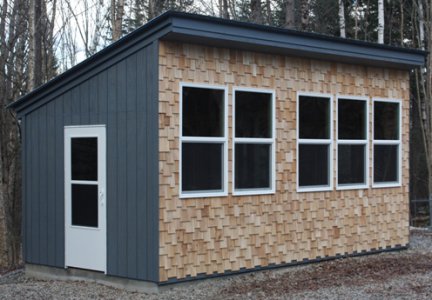
Then I put my watchmaker's bench in the clean room (8' x 9') which is for assembly, inspection, timing and cleaning:
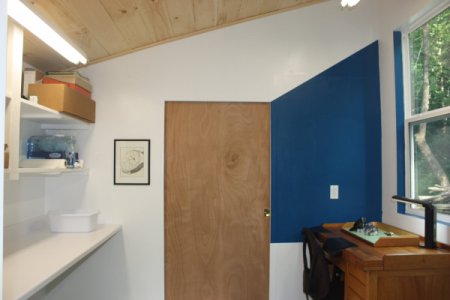
I wanted everything painted white so I can find those little tiny watch parts that are sure to bounce around the rooms. The large windows (they go from 4 feet to 9 feet above the floor) are south-facing, a shop no-no in most parts of the country. Here, there are only 60 days of sun per year and our thick forest mitigates even those few so I wanted lots of natural light. The combination of sun and white walls can be blinding, so any part of the wall where sun can touch has been dulled with a matte dark blue paint. Notice even the window casements are dulled at the bottom and sides, the tops are still white since sun can't get there.
On the other side of that central pocket door is the 'dirty' room (12' x 9'). Manufacturing on the lathe and mill, and metal treatment (hardening, tempering, etc) is done on the main bench. Grinding and polishing is done on the white bench opposite. The big bench is a single white pine board more than 2 feet wide and more than 11 feet long. I bolted it through slots so it could move with the weather. A forgiving and pretty work surface.
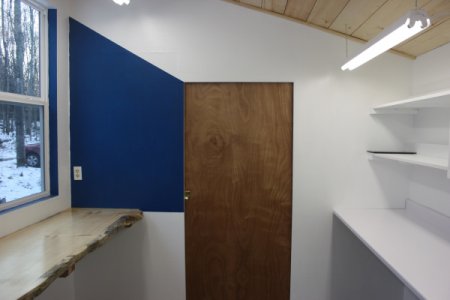
Then I installed my tabletop lathe and mill (metric Sherlines), which are mounted onto white-painted plywood bases. Notice the base cutouts so I can get my big mitts on the lower handwheels. You can just see a bit of my little 2 gallon shop vac, which is my entire dust-collection/air-handling system, hanging on the wall under the lathe:
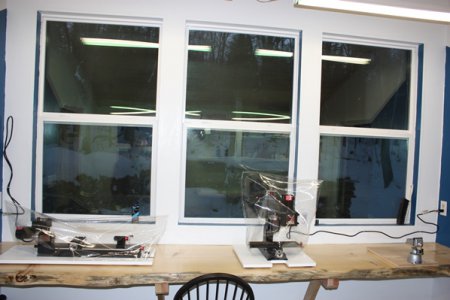
So far, I've built a necklace for my wife (to thank her for allowing household resources to go to the workshop) and my first brass mainplate and bridge. Next up, my first steel screw!
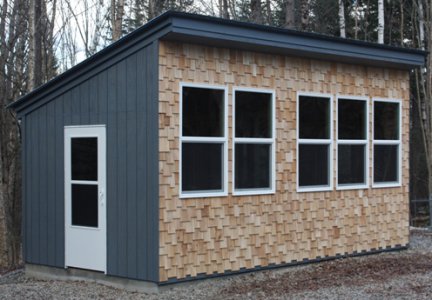
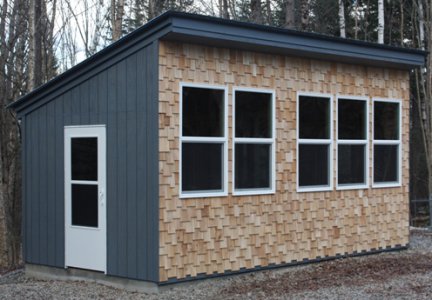
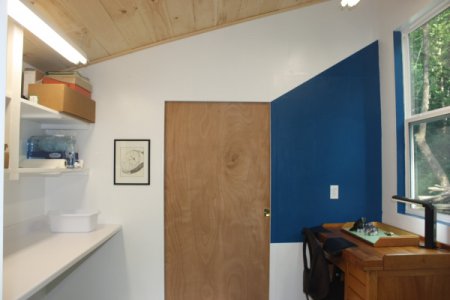
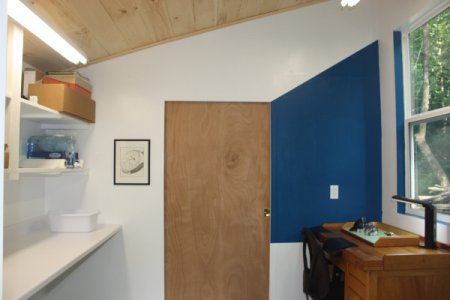
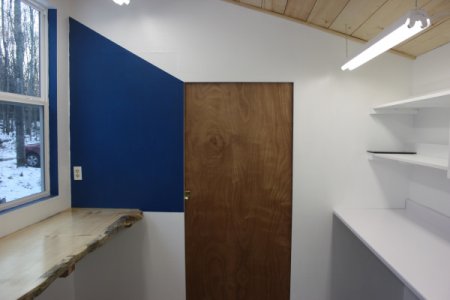
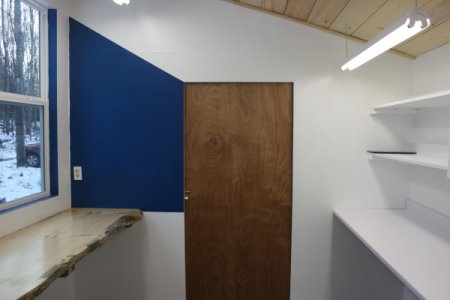
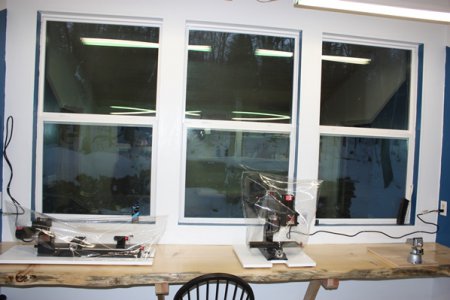
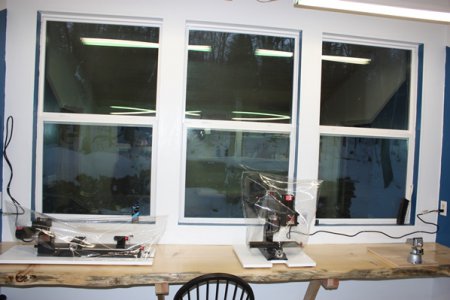
,

Then I put my watchmaker's bench in the clean room (8' x 9') which is for assembly, inspection, timing and cleaning:

I wanted everything painted white so I can find those little tiny watch parts that are sure to bounce around the rooms. The large windows (they go from 4 feet to 9 feet above the floor) are south-facing, a shop no-no in most parts of the country. Here, there are only 60 days of sun per year and our thick forest mitigates even those few so I wanted lots of natural light. The combination of sun and white walls can be blinding, so any part of the wall where sun can touch has been dulled with a matte dark blue paint. Notice even the window casements are dulled at the bottom and sides, the tops are still white since sun can't get there.
On the other side of that central pocket door is the 'dirty' room (12' x 9'). Manufacturing on the lathe and mill, and metal treatment (hardening, tempering, etc) is done on the main bench. Grinding and polishing is done on the white bench opposite. The big bench is a single white pine board more than 2 feet wide and more than 11 feet long. I bolted it through slots so it could move with the weather. A forgiving and pretty work surface.

Then I installed my tabletop lathe and mill (metric Sherlines), which are mounted onto white-painted plywood bases. Notice the base cutouts so I can get my big mitts on the lower handwheels. You can just see a bit of my little 2 gallon shop vac, which is my entire dust-collection/air-handling system, hanging on the wall under the lathe:

So far, I've built a necklace for my wife (to thank her for allowing household resources to go to the workshop) and my first brass mainplate and bridge. Next up, my first steel screw!








